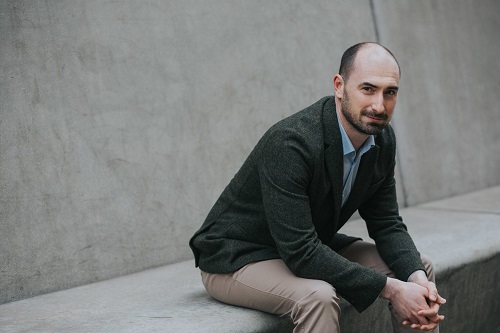All roads lead to Rome. And, that’s where George Frideric Handel, not yet 22 years of age, arrived at the end of 1706. Eager to perfect his skills in composition for the human voice, and with public entertainment in the theatre banned in the Papal States, Handel wasted no time working his way into city’s dynamic cultural life and the dense network of aristocratic patronage, both ecclesiastical and secular, that sustained it.
Having shown off his talents as an organist, harpsichordist and composer, Handel was invited to contribute to both religious events and private concerts, known as accademie or conversazioni, which were held in the palatial homes and gardens of wealthy patrons. The Accademia degli Arcadi, which had been founded in 1690, was hosted during Handel’s Italian years by the Marquis Ruspoli. Its members included the Cardinals Pamphili, Ottoboni and Colonna, poets and librettists such as Silvio Stampiglia, Apostolo Zeno and, later, Pietro Metastasio, and musicians including Giovanni Bononcini, Arcangelo Corelli and Alessandro Scarlatti. Handel was himself never a member, but he was welcomed into the Arcadian circle, and it was in Ruspoli’s Palazzo Bonelli that his Italian cantata Amarilli vezzosa (or Il Duello Amoroso) was first performed on 28th October 1708 by the soprano Margherita Durastanti and the alto castrato Pasqualino, accompanied by violins and continuo.
At Wigmore Hall, the Edinburgh based Ensemble Marsyas joined with soprano Louise Alder and countertenor Christopher Lowrey, to take us back to Handel’s Roman sojourn. The gentle pastoral sentiment of the two-part overture and subsequent Menuetto reminded us of the Accademia’s poetic idealization of the mythic Arcadia, but while Amaryllis might be ‘charming’ she’s in no mood to be sympathetic to the scorned Daliso’s sufferings. Il Duello Amoroso is no happy-every-after story, but a bitter lovers’ tiff of verbal and actual violence.

Although positioned at opposite sides of Wigmore Hall’s stage, Alder and Lowrey enacted this mini-opera of rejection, ridicule and reproach with well-defined characterisation and dramatic tension. In his first aria, ‘Pietoso sguardo, vezzo bugiardo’ (a minuet which Handel re-used in several of his later London operas ), Lowrey’s even, smooth countertenor beautifully evoked Daliso’s exasperation and despair, only to be met by the haughty Amaryllis’ disparagement. The flexibility of Alder’s phrasing and the dynamic variety enabled her to make much of the text, and if in ‘Piacer che non si dona’ the soprano’s thirds with the violins (Sarah Sexton and Michael Gurevich) seemed to tease Daliso with their carefree sweetness, then the shepherdess’s admission of her own cruelty struck a serioso note.
But, the sombreness didn’t last long; irritated by Daliso’s threats to use force in order to possess her, this Amaryllis dismissed him with sparkling floridity, enhanced by the violins’ racing scales. The fiddles then echoed the shepherd’s sobs, in Daliso’s lovely lilting siciliana, ‘È vanità d’un cor’ (later recycled by Handel for Ottone’s ‘Pur ch’io ti stringo al sen’ in Agrippina) – a confession of lack of fortitude which only incited more mockery from the unforgiving Amaryllis who twisted in the knife that he had baulked at using by hinting that she would have relented if he had proved himself more of a man. The final duet ‘Sì, sì, lasciami, ingrata’ (later to be adapted by Handel in the finale of Poro) was anything but ‘amorous’ but if discord remained, the music itself offered rich consolations.

Earlier we had heard sections of two more of Handel’s cantatas, both dating from 1710 when the composer was in Hanover in the employ of Princess Caroline (later to become Queen Caroline of England, Handel’s generous patron). The lilting triple-time opening of Conservate, raddoppiate flowed easily and cheerfully, the two singers in expressive and melodious accord. Alder seemed to take care to balance her bright soprano against an alto line that often dips low, and the singers evoked a mood of gentle intimacy. The concert began with the first section of Tanti strali al sen mi scocchi in which Alder and Lowrey adopted a lively tempo to heighten the pace of the many arrows that strike at the lovers’ breasts, and their vocal agility, especially in the da capo repeat, was matched by a buoyant accompaniment.
Interspersed between the vocal items were instrumental works, creating a programme such as might have been enjoyed at those Roman conversazioni. In Handel’s early Sinfonia in Bb HWV339 Ensemble Marsyas demonstrated how to vitalise what are familiar harmonic sequences and make them fresh and dynamic. Energised exchanges between the violins were supported by cellist Sarah McMahon’s lithe, shapely bass line, director-harpsichordist Peter Whelan and lutenist Sergio Bucheli contributed to the stylish continuo textures, and there was well-judged rhetoric from all at the cadences. There was plenty of drama and tension in the Allegro movements of the Trio Sonata in G minor HWV393 while the Largo made one wonder – as so often – how Handel could create such beauty from such simple means. Two editions of Handel’s twelve Op.1 sonatas were published during his lifetime, the first in Amsterdam and the second in London, in 1734, by his London publisher John Walsh. The editions differ slightly but they both contain four sonatas for recorder, three for flute, three for violin, and two oboe sonatas. It was, however, to his bassoon that Whelan switched to perform the Sonata in F Op.1 No.11, playing with nimbleness and elegance, taking the virtuosic leaps in his stride, and evoking a rich array of colours.
Tanti strali which had begun the evening also provided a fine conclusion, when Alder and Lowrey returned to the platform to acknowledge the warm applause and perform an encore – the cantata’s final two sections. The Adagio beguiled, the phrases delicate but sensuous and beautifully accompanied by cello and lute, and a flamboyant Allegro followed. When he was in Rome, Denis Nolhac, a linen and silk merchant from Hanau in Hesse was invited to hear Handel play the harpsichord and later noted (in Voyage historique et politique de Suisse, d’Italie et d’Allemagne, vol.2, 1737) that the Italians were so astonished by Handel’s musical talent that they suspected his skills were supernatural. This lovely, heartening recital made it easy to understand why.
Claire Seymour
Ensemble Marsyas, Peter Whelan (director), Louise Alder (soprano), Christopher Lowrey (countertenor)
Handel – Sinfonia in B flat HWV339, Tanti strali al sen mi scocchi HWV197, Trio Sonata in G minor HWV393, Conservate, raddoppiate HWV185, Sonata in F Op.1 No.11 HWV369 for bassoon and continuo, Amarilli Vezzosa (Il Duello Amoroso) HWV82
Wigmore Hall, London; Saturday 29th May 2021.
ABOVE: Louise Alder (c) William Alder